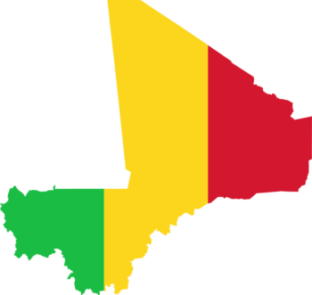Mali is a landlocked country in the Sahel with a population of about 18 million people (2016 estimates). About 60% of the area is classified as dryland and desert. Agriculture makes up about 45 percent of Malian GDP, but its influence goes far beyond that level; the majority of the population is employed in agriculture. Although the GDP per capita has grown in the last ten years, Mali continues to be a poor country that depends heavily on cotton and gold exports. These two products generate more than half of the revenue. The most important agricultural products are rice, maize, millet and sorghum, groundnuts, and animal products. Rice, maize, millet and sorghum also account for a large share of the calories consumed, but the national diet is lacking in micronutrient rich foods. A consequence of this imbalance are the high child stunting and micronutrient deficiency rates in Mali. Meanwhile, overweight and obesity rates in adults are also increasing.
Read the full country dossier here, and read the country innovation study on the status of agricultural innovations, innovation platforms and innovation investments in Mali here.
